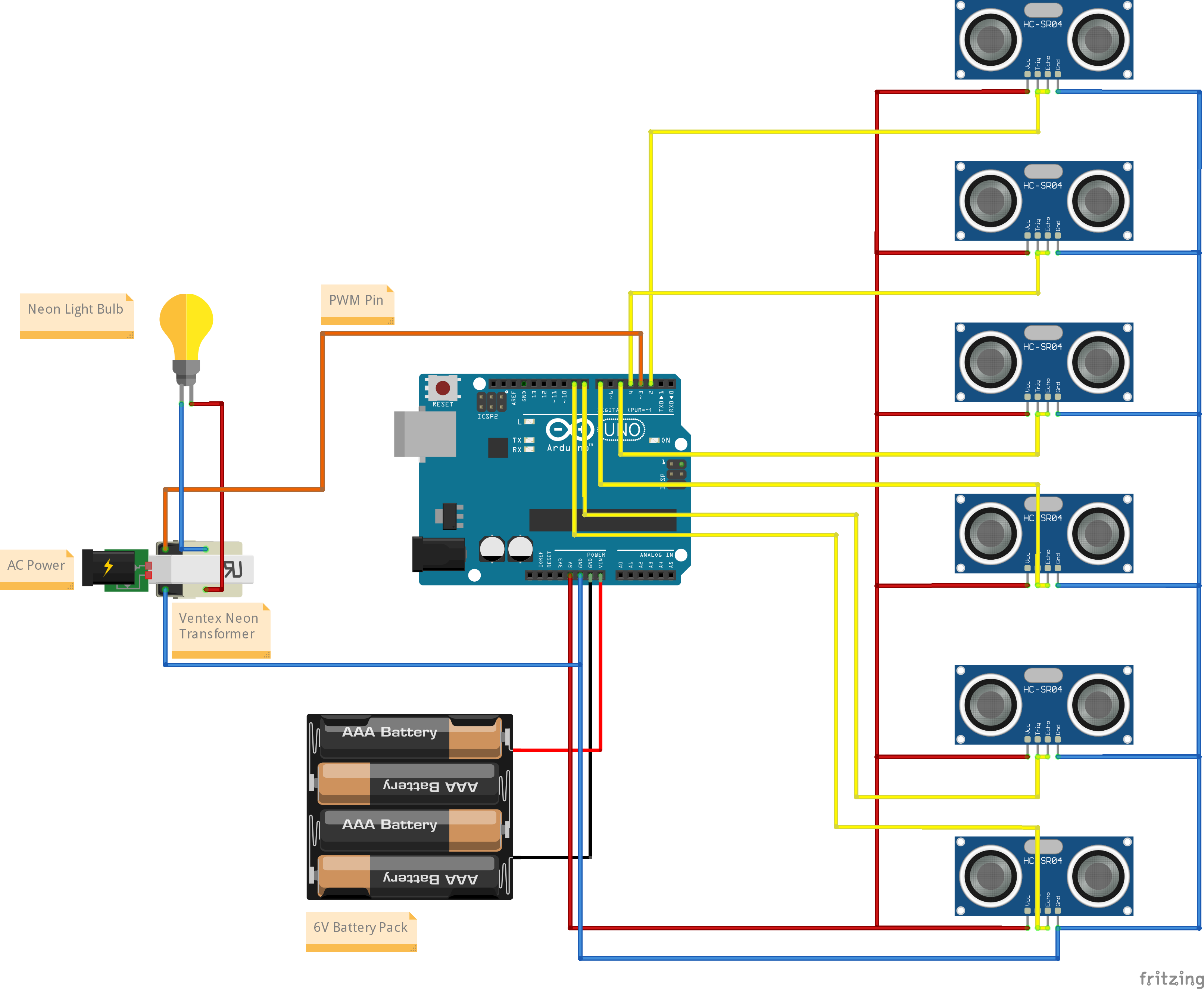Polarities
ROLE: Physical Computing, Installation Designer
Polarities engage through a glass sculpture filled with a gas subjected to a bombardment of electrons, forces assumed by the artist to be complementary and placed at each end of the work, reacting sensitively to the audience’s presence.
Powered by light and physical engagement, the installation evolves and shapeshifts in response to audience interaction, creating a seamless fusion of artwork and viewer experience.
https://www.nyu.edu/about/news-publications/news/2024/may/yann-toma--an-artist-in-residence-at-la-maison-francaise-of-nyu-.html




Technical Documentation
The basic idea of this installation is that as the viewer approaches the light, the light will get brighter and as the viewer walks away from the light, the light will get dimmer. Also, the audio’s volume, tone, and frequency will vary based on the distance from the viewer to the light.
To make sure that viewers approaching from every direction can be detected by the ultrasonic sensors, I included six sensors in this setup. Data from each sensor is compared against one and another to find the minimum value, or the closest object to the light. This value is then used to control the scale of PWM (the brightness of the neon light).
Because ultrasonic sensors are not very good at detecting soft objects such as cloth, the sensor readings often fluctuate. So I took the median value of a sample of 7 minimum readings to smoothen out the value and to prevent the neon light from flickering. This final value is sent to MaxMsp through serial to control audio.
To make sure that viewers approaching from every direction can be detected by the ultrasonic sensors, I included six sensors in this setup. Data from each sensor is compared against one and another to find the minimum value, or the closest object to the light. This value is then used to control the scale of PWM (the brightness of the neon light).
Because ultrasonic sensors are not very good at detecting soft objects such as cloth, the sensor readings often fluctuate. So I took the median value of a sample of 7 minimum readings to smoothen out the value and to prevent the neon light from flickering. This final value is sent to MaxMsp through serial to control audio.

Breadboard view of an Arduino Uno connected to six HC-SR04
Ultrasonic sensors. The ground pins of the six ultrasonic sensors are wired in parallel
and connected to the GND pin of Arduino. The power (VCC) pins of the sensors are
wired in parallel and connected to the 5V pin of Arduino. Trig and Echo pins of
each sensor are connected to one another, thanks to the New Ping Library that
allows both Trig and Echo pin to be connected to one digital pin on an Arduino.
In the graph above, from top to bottom, Trig and Echo pins from each sensor are
connected to digital pin 2, 4, 5, 7, 8, 9 on Arduino Uno. Arduino Uno is
powered by a 6V battery pack that is connected to the VIN and GND pin on the Arduino.
Arduino Uno can be alternatively powered directly by a DC barrel jack for a permanent
installation.
Two ends of the Neon Light Bulb are connected to a Neon Transformer (Ventex VT5520) that is plugged into an AC outlet. The PWM control pin from the transformer is connected to digital pin 3 on the Arduino and the ground pin connected to the GND pin of Arduino.
Two ends of the Neon Light Bulb are connected to a Neon Transformer (Ventex VT5520) that is plugged into an AC outlet. The PWM control pin from the transformer is connected to digital pin 3 on the Arduino and the ground pin connected to the GND pin of Arduino.

